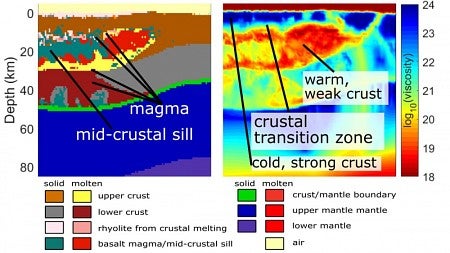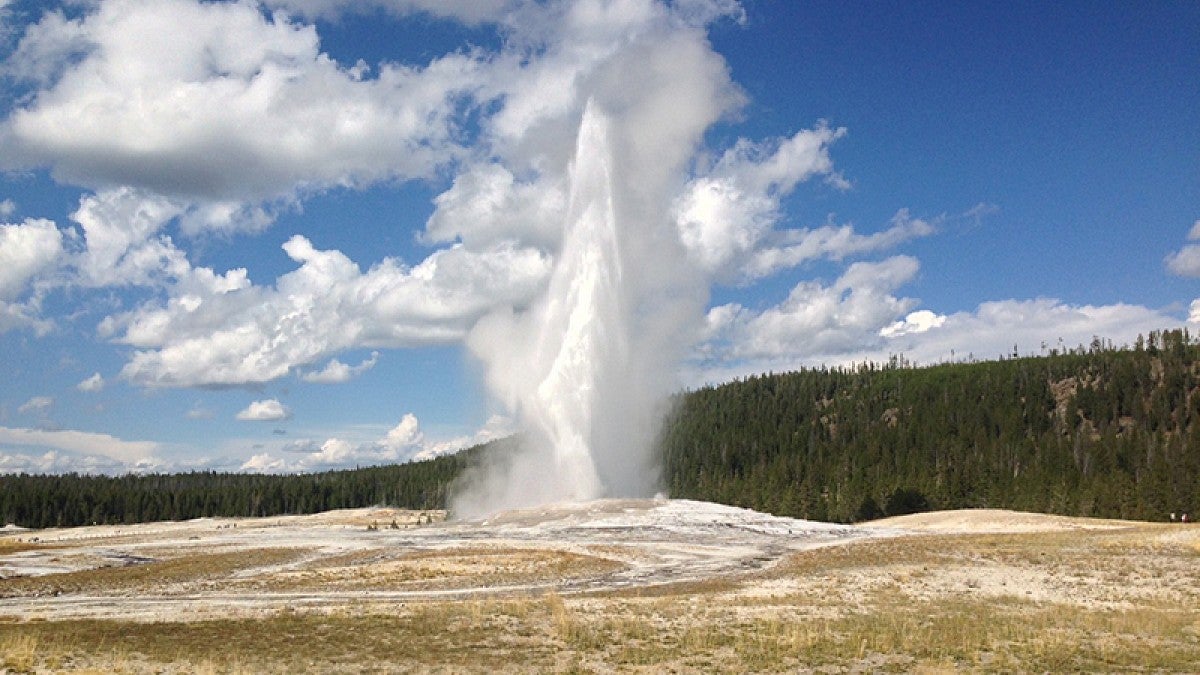UO researchers, using the power of supercomputer modeling, have delivered focus to fuzzy views of previously published seismic wave imaging of magma under Yellowstone National Park.
The modeling, led by Dylan Colón, a UO doctoral student in the Department of Earth Sciences, unveiled a transition zone in the crust 3 to 6 miles below the surface. Pockets of magma lay above and below the zone, which separates cold, rigid rocks of the upper crust from hot rocks easily altered by partially molten materials down below.

The park also is a magnet for scientists seeking to understand the magma chambers so they can try to predict future eruptions. The last caldera forming eruption occurred 630,000 years ago.
The new structural information, detailed in a paper published in the journal Geophysical Research Letters, may apply to supervolcanoes worldwide, but, for now, it is not helpful for projecting future volcanic activity, Colón said.
The structure at Yellowstone, however, may explain past explosive eruptions, said UO geologist Ilya Bindeman, a study co-author.
RELATED LINKS
"This is the nursery, a geological and petrological match with eruptive products,” he said. “Our modeling helps to identify the geologic structure of where the rhyolitic material is located."
Rhyolitic magma is rich is silica. Its overall chemical composition gives it a lower temperature and higher viscosity than other magmas. It doesn’t flow easily and resists gas expansion. Pressure builds over time and fuels violent eruptions.
Seismic imaging published in 2014 and 2015 by University of Utah-led teams pointed, respectively, to a magma chamber near the surface and another at a depth of 12-27 miles. However, Colón said, those studies could not identify the composition, state and amount of material in the two magma bodies or how and why they formed.
To approach that challenge, Colón and Bindeman teamed with Taras V. Gerya, a scientist at the Swiss Federal Institute of Technology, also known as ETH Zurich, to write new codes for supercomputer modeling.
Their modeling repeatedly identified a large layer of cooled magma with a high melting point forms at a mid-crustal sill, separating the two magma bodies.
"This research helps to explain some of the chemical signatures that are seen in eruptive materials," Colón said. "We can also use it to explore how hot the mantle plume is by comparing models of different plumes to the actual situation at Yellowstone that we understand from the geologic record."
The National Science Foundation funded the work through a grant to Bindeman. Colón also received support from the Jay M. McMurray Fund, which provides summer research and travel funding, in the UO Department of Earth Sciences.
—By Jim Barlow, University Communications


